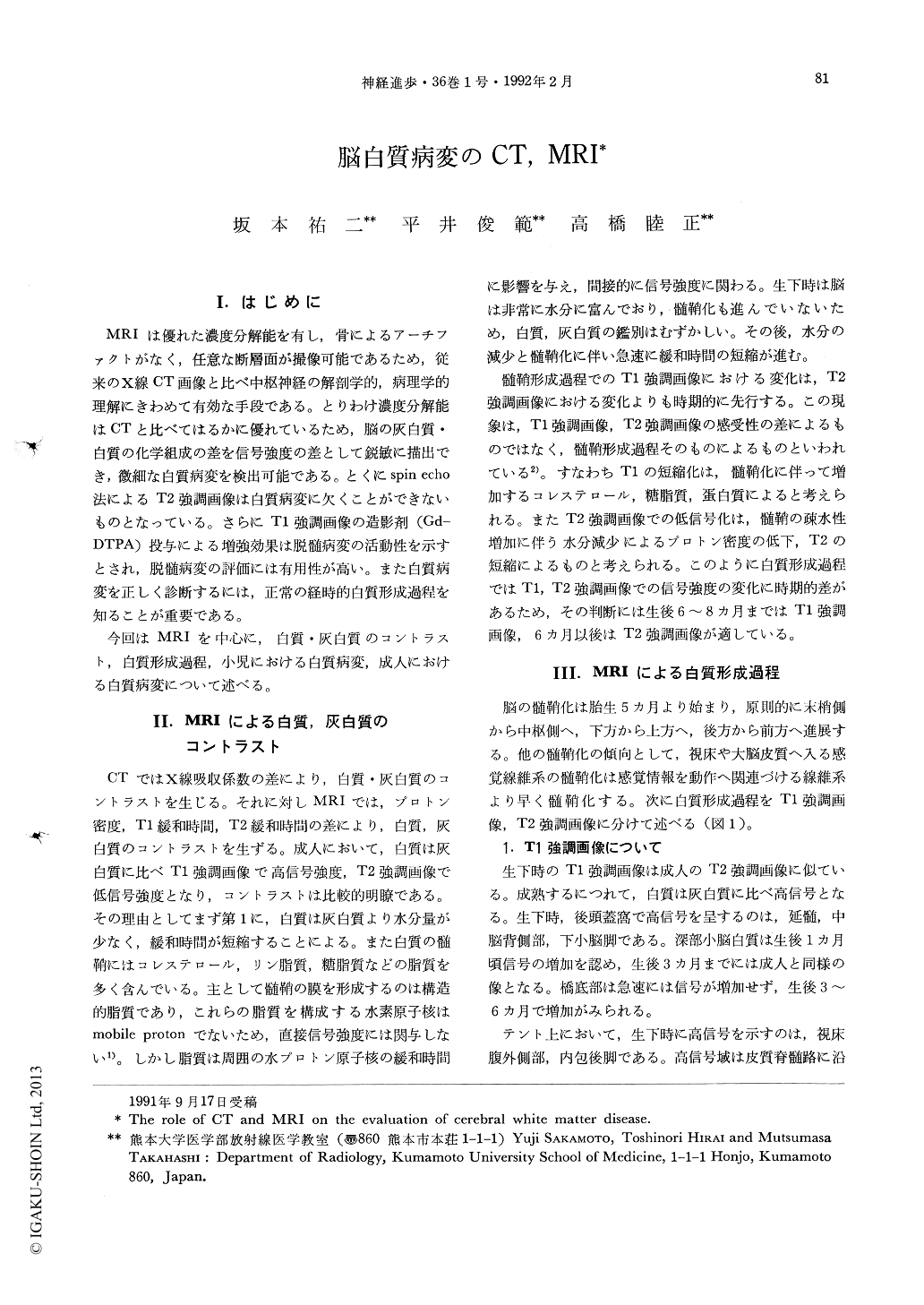Japanese
English
- 有料閲覧
- Abstract 文献概要
- 1ページ目 Look Inside
I.はじめに
MRIは優れた濃度分解能を有し,骨によるアーチファクトがなく,任意な断層面が撮像可能であるため,従来のX線CT画像と比べ中枢神経の解剖学的,病理学的理解にきわめて有効な手段である。とりわけ濃度分解能はCTと比べてはるかに優れているため,脳の灰白質・白質の化学組成の差を信号強度の差として鋭敏に描出でき,微細な白質病変を検出可能である。とくにspin echo法によるT2強調画像は白質病変に欠くことができないものとなっている。さらにT1強調画像の造影剤(Gd-DTPA)投与による増強効果は脱髄病変の活動性を示すとされ,脱髄病変の評価には有用性が高い。また白質病変を正しく診断するには,正常の経時的白質形成過程を知ることが重要である。
今回はMRIを中心に,白質・灰白質のコントラスト,白質形成過程,小児における白質病変,成人における白質病変について述べる。
With recent developments of CT and MRI, it has become possible to visualize white matter development and abnormality with considerable clearity. It is particulary important that MRI visualizes the white matter lesions clearly and accurately. In this report we describe the normal white matter development and white matter diseases with consideration of usefulness and limitations of MRI and CT.
Normal myelination of white matter in children can be clearly demonstrated by MRI. T1-weighted image shows the change of the amount of cholesterol, lipid and protein which introduce the shortening of T1 value. T2-weighted image shows the changes of the amount of water which introduce the decreasing of proton density and the shortening of T2 value. These changes are seen best on T1-weighted image during the first 6 to 8 months of life and on T2-weighted image after 6 months of life. Myelination of the brain begins during the fifth fetal month. In general, the myelination progresses from caudal to cephalad, and from dorsal to ventral. The brain stem myelinates prior to the cerebellum and basal ganglia. Similarly, the cerebellum and basal ganglia myelinate prior to cerebral hemisphere. Another trend in the maturation of the brain is the myelination of those fiber systems mediating sensory input to the thalamus and the cerebral cortex precedes myelination of those fibersystems that correlate the sensory data into movement.

Copyright © 1992, Igaku-Shoin Ltd. All rights reserved.


